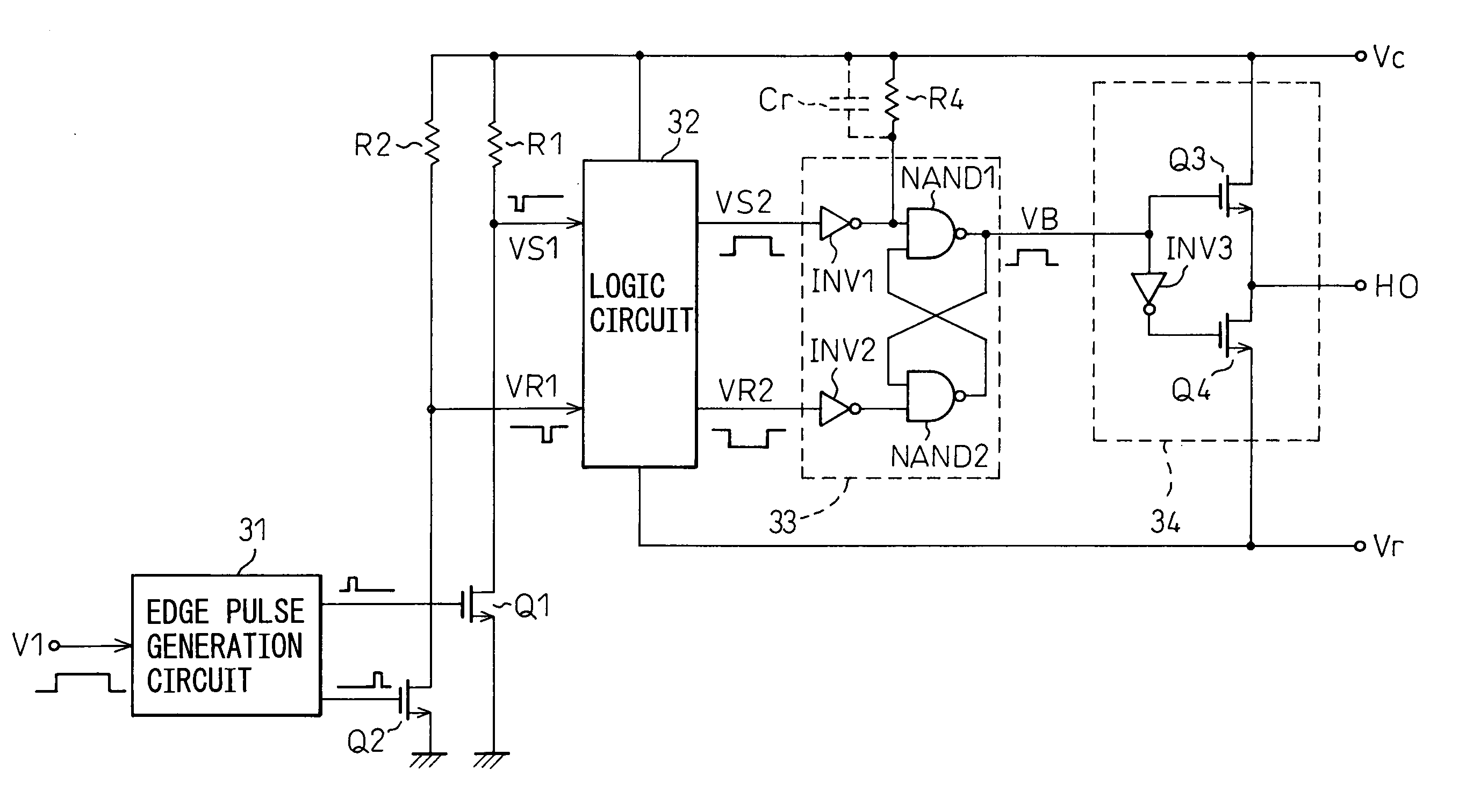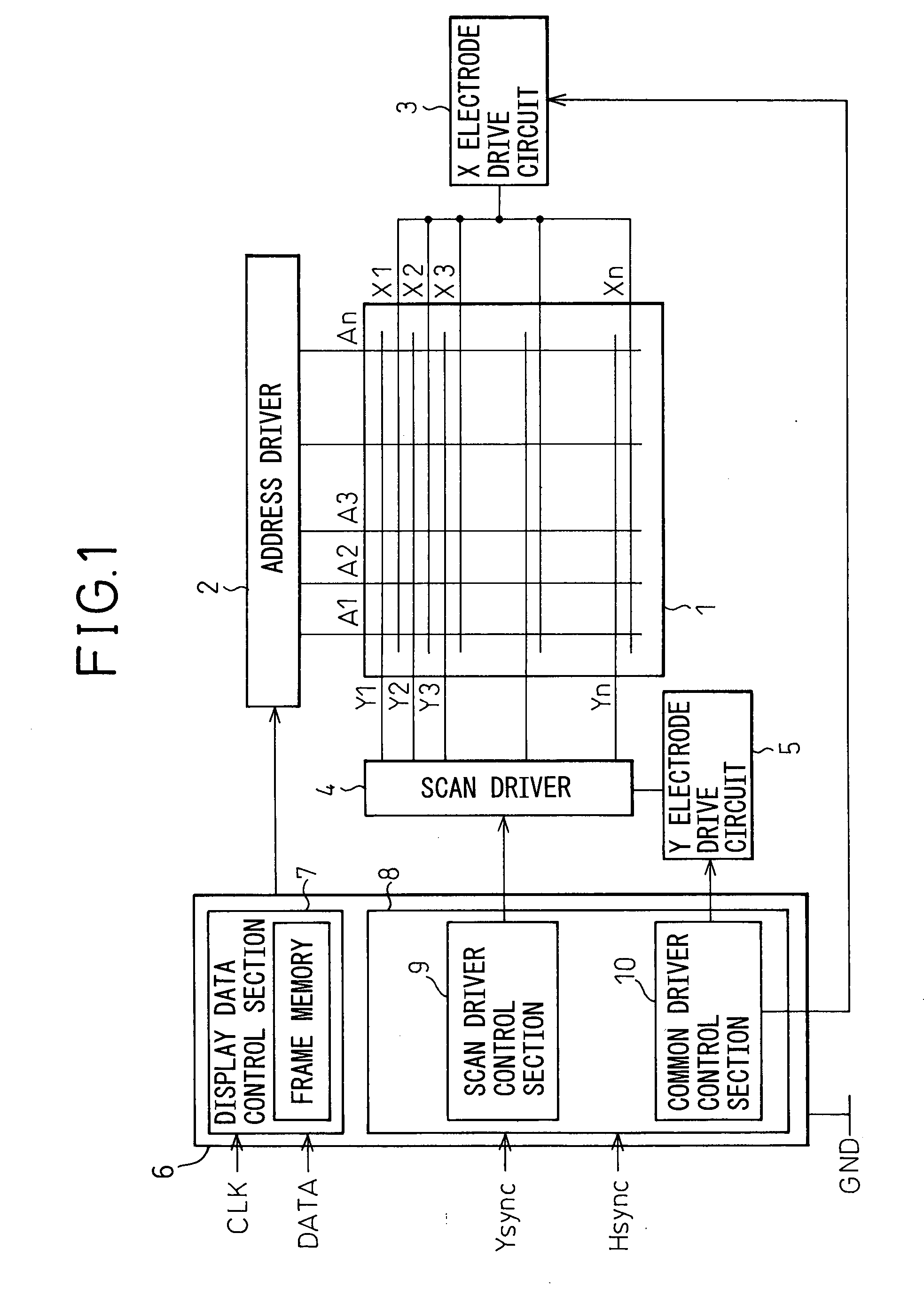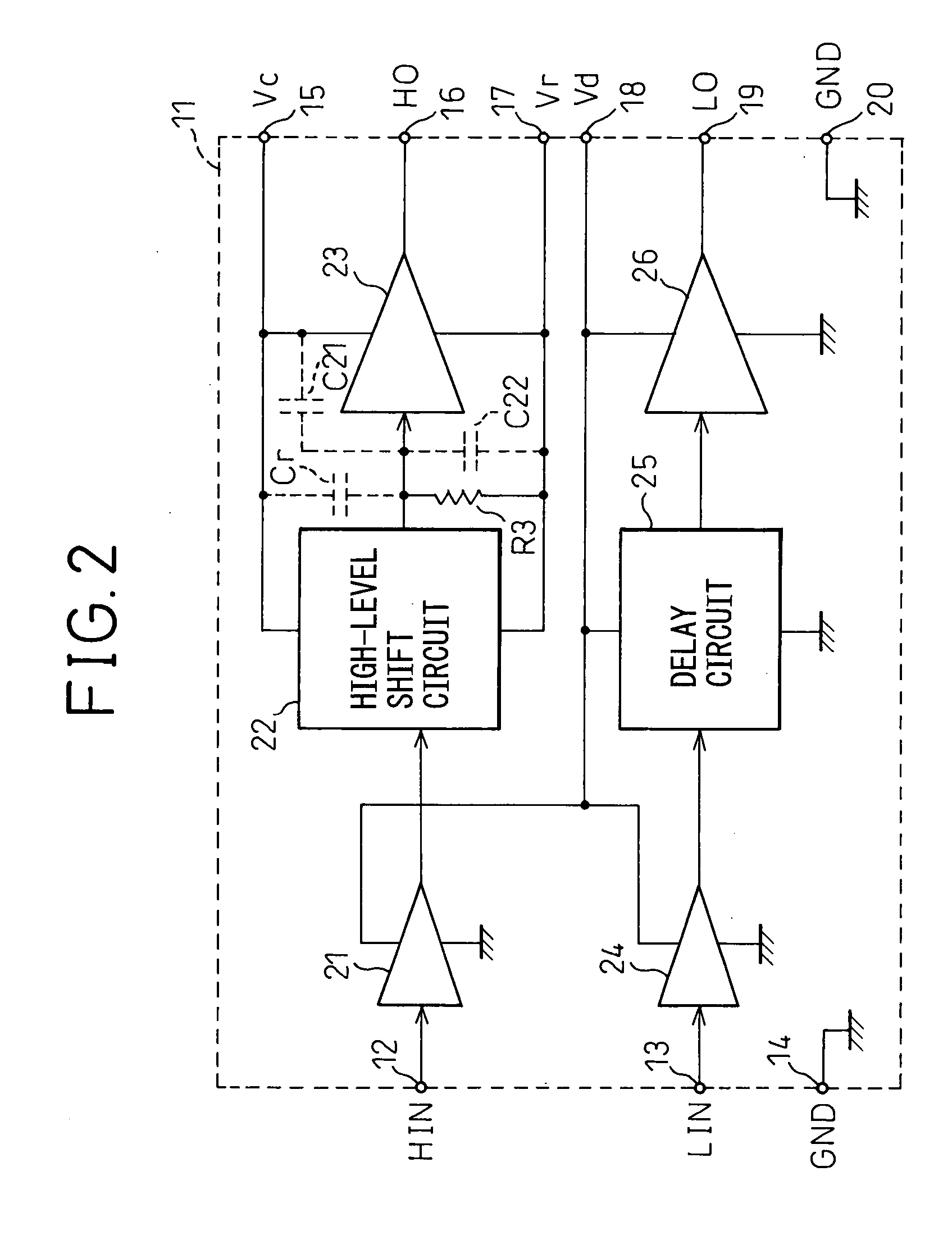Drive circuit for display apparatus and plasma display apparatus
a drive circuit and display apparatus technology, applied in the direction of instruments, filing appliances, pulse techniques, etc., can solve the problems of output device cu or output device lu being destroyed, and achieve the effect of preventing output device from being destroyed and avoiding malfunctions
- Summary
- Abstract
- Description
- Claims
- Application Information
AI Technical Summary
Benefits of technology
Problems solved by technology
Method used
Image
Examples
first embodiment
[0048] In the circuit in the first embodiment, when the output signal of INV1 is at the H level, an output voltage HO turns to the L level. In the circuit shown in FIG. 6, a parasitic capacitor Cr, when a diffused resistor is used for the setup resistor R4, is connected in parallel with the setup resistor R4. Because of this, a rush of current that flows through the parasitic capacitor Cr when the power is turned on bypasses the setup resistor R4. As a result, it is possible not only to suppress the voltage that develops across both ends of the setup resistor R4 due to the rush of current when the power is turned on but also to more surely return the output voltage of INV1 to the H level because of the rush of current that flows through the parasitic capacitor Cr, therefore, it is possible to surely return the output voltage HO to the L level.
[0049] As a result, when the circuit shown in FIG. 6 is applied to the drive circuit shown in FIG. 2 to drive the output device of the sustain...
third embodiment
[0052]FIG. 8 is a diagram showing the configuration of a level shift circuit and an output amplifier circuit in a drive circuit for a display apparatus in the present invention, corresponding to FIG. 4. As is obvious from comparison with FIG. 4, the configuration is similar to that of the circuit shown in FIG. 4 but the difference lies in that a polysilicon resistor is used for the setup resistor R3.
[0053]FIG. 9A is a sectional view of a polysilicon resistor formed on an IC substrate and FIG. 9AB is a top view of a resistor pattern. As shown in FIG. 9A, a P-type diffusion layer 52 is provided on a P-type substrate 51 and a polysilicon layer 53 is provided thereon. The polysilicon layer 53 has a pattern 54 as shown in FIG. 9B and terminals T1 and T2 are provided on both ends of the pattern 54 as the terminals of the resistor. The resistance is determined based on the length of the pattern 54. Here, the P-type diffusion layer 52 is connected to the reference voltage line Vr but not to...
fourth embodiment
[0059] In the circuit in the fourth embodiment, a signal VR3 is generated by delaying a reset signal VR2 output from a logic circuit 32 and the signal VR3 is inputted to the flip-flop circuit 33. As a result, the output signal of a second NAND circuit NAND 2 (the input signal of the first NAND circuit NAND 1) is delayed compared to the signal inputted to the first NAND circuit NAND 1 from the set signal VS2 output from the logic circuit 32 via INV1 by the amount according to the time to pass through the reset delay circuit 35. Therefore, the time at which an output signal VB of the flip-flop circuit 33 is set by the set signal VS2 is ahead of the time at which the output signal VB is reset by the reset signal VR2. Because of this, even if the set signal VS2 and the reset signal VR2 are output simultaneously such as when the power supply voltage Vc is turned on, the reset signal VR2 to be inputted later determines the voltage level of the output signal VB of the flip-flop circuit 33,...
PUM
 Login to View More
Login to View More Abstract
Description
Claims
Application Information
 Login to View More
Login to View More - R&D
- Intellectual Property
- Life Sciences
- Materials
- Tech Scout
- Unparalleled Data Quality
- Higher Quality Content
- 60% Fewer Hallucinations
Browse by: Latest US Patents, China's latest patents, Technical Efficacy Thesaurus, Application Domain, Technology Topic, Popular Technical Reports.
© 2025 PatSnap. All rights reserved.Legal|Privacy policy|Modern Slavery Act Transparency Statement|Sitemap|About US| Contact US: help@patsnap.com



